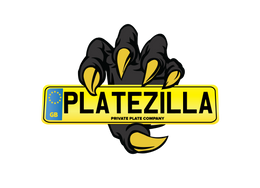Acrylic plates are the most common type of number plate in the UK, and are the most durable and robust plates currently available. Acrylic is a cost-effective material, especially when mass produced by injection moulding. An acrylic number plate is a 3-part plate made by combining a blank plate, optically clear adhesive, and a sheet of retroreflective film.
1. Acrylic Plate
The acrylic plate is usually extruded or injection moulded. Injection moulded plates are mass produced for the industry by a few large manufacturers and are cheaper. Extruded acrylic comes in sheet form and can be cut with a laser cutter, router, or other suitable cutter, into the specific sizes required for number plates.
Both types are of an equal quality and consistency, and the choice depends on the manufacturing capabilities of the number plate maker. Extruded acrylic is more expensive but can be cut to any size the maker wants. Injection moulded acrylic requires a large manufacturing operation to be cost-effective.
2. Optically Clear Adhesive
Once the acrylic blank has been obtained, it needs to be laminated with an optically clear adhesive that can pass the British standard. This means it must be able to work across a wide temperature range to avoid failure by melting or freezing. Laminators can apply adhesive in sheet form (for extruded acrylic) or in single plate form (for injection moulded acrylic).
Optically clear adhesive is usually a solvent based acrylic or polyurethane adhesive, such as 3M's VHB, a general purpose signmaker's adhesive with a wide range of applications. These adhesives are pressure sensitive (they bond through the use of pressure during application) and are particularly good at bonding with low surface energy materials such as acrylic.
Once the acrylic blank has been laminated, it is ready to be made in to a number plate.
3. Retroreflective Film
The retroreflective film is a special reflective vinyl manufactured to meet the reflectivity and colour regulations of the British standard. It is cut to size using a vinyl cutter, laser cutter, die cutter, or other suitable cutter. The term "retroreflective" refers to a surface that reflects light directly back to its source, rather than reflecting it off at an angle. At night time, ANPR cameras shine infrared light at your number plate in order to read it. Without the light being reflected back to the camera lens, the camera would not be able to read your plate.
The registration number, supplier name & postcode, the British standard, and optional flags and borders are printed directly on the reflective sheet. The sheet is then lined up on a jig & roller with alignment pins, and the acrlic blank is placed on top of it (adhesive side down). Both components are then sent through a roller (can be hand-wound or electric) and pressed together, forming the finished number plate.
